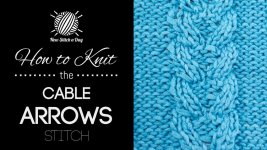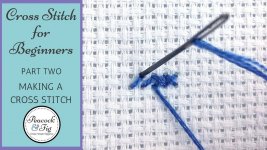Actually, having said that, some good information manages to surface in this thread, the contributions from JM and Jn being examples.
The thing to do is not to be goaded by the obtuse statements made by the OP!
The thing to do is not to be goaded by the obtuse statements made by the OP!
May be the best was this one seen on diyaudio.
The optimized speaker cable.
Because thickness is very important, make the signal wire thicker, then it does not matter much for the return wire with a thin wire.

The optimized speaker cable.
Because thickness is very important, make the signal wire thicker, then it does not matter much for the return wire with a thin wire.


IME, yes that is so (and what I keep sayin').Does this suggest that the red side of JM Fahey's figure of eight flex will impart a different sound from the black side? 😕
Dan.
we twist them so they don't become antennas. As if it matters, this is a good debatable question.
Not only red and black that have sound impact.
We have side ways that can be indicated by arrows at the cable terminals. Do not confuse input and outputs, do as specified by the arrows. I do not hear a difference, I do not have golden ears, but cardboard at most.
We have side ways that can be indicated by arrows at the cable terminals. Do not confuse input and outputs, do as specified by the arrows. I do not hear a difference, I do not have golden ears, but cardboard at most.
...red and black that have sound impact...
It is worth notin gthat the stuff used to colour the wire may have an effect on the sound. Black for instance often has carbon in it to make it black for instance.
dave
Now you have me in stitches!We have side ways that can be indicated by arrows at the cable terminals.
Attachments
Now you have me in stitches!
What a untapped resource! Hand knitted speaker cables 😀
The Russian painter Wassily Kandinsky interprets the colour black as “a totally dead silence".Black for instance often has carbon in it to make it black.
In music, black is represented by one of those profound and final pauses, after which any continuation of the melody seems the dawn of another world.
So Dan may have a point! 😎
I tried it, but it only made me cross!I used to be able to do that...
Attachments
First thing that stuck out to me in the Iconoclast "SPEAKER CABLE DESIGN BRIEF" was the choice of 1.5Ohm speaker wire resistance.
That is freakin 500' of 12awg speaker wire! WTF is anyone doing running a 500' run of speaker wire?
A run of 20' would only yield 60miliOhm resistance.
Just more smoke and mirrors as far as I'm concerned.
I'm wondering how he is getting away with using the Belden name in his BS.
Belden has their own speaker wire:
https://catalog.belden.com/techdata/EN/5000UE_techdata.pdf
Even for high power applications:
https://info.belden.com/hubfs/resou...-speaker-cable-product-bulletin.pdf?hsLang=en
That is freakin 500' of 12awg speaker wire! WTF is anyone doing running a 500' run of speaker wire?
A run of 20' would only yield 60miliOhm resistance.
Just more smoke and mirrors as far as I'm concerned.
I'm wondering how he is getting away with using the Belden name in his BS.
Belden has their own speaker wire:
https://catalog.belden.com/techdata/EN/5000UE_techdata.pdf
Even for high power applications:
https://info.belden.com/hubfs/resou...-speaker-cable-product-bulletin.pdf?hsLang=en
You mis-interpret.
I do not care if you think it is audible or not.
However, I have provided the engineering aspects to the cable inductance and capacitance, how to change the numbers as they apply to the energy delivered to the load, as well as controlled, simple, and sensitive audibility tests to determine if what was done has any affect on the sound.
Providing detailed understandings is not the same as "no point in trying".
jn
Fair enough … Just saying a few simple tricks of lowering C or L probably won't make an audible difference.
That may be accurate. Without knowing the system details, it is not possible to determine linear phase shifts and rolloff, nor any non linear issues. That is why the simple audibility test.
Jn
Jn
That is why the simple audibility test.
Jn
That would be true based on the assumption that cables do make an audible difference.
There was a post in thread about a blind test in which people could not tell the difference between coat hangers and Nordost cables. So if there is no difference between a coat hangers and a high end Nordost cable, then based on that study, it's hard to imagine a change of R,L, or C on the same cable would make a difference, IMO.
No. My audibility test does not care about any assumptions.That would be true based on the assumption that cables do make an audible difference?
It only cares about an assymetrical response to a cable change. If no detection, nothing to see. If a change, then something to look at.
You must understand, this is not rocket science.
Ps. I do not rely on anecdotes. What I do for a living is far more exacting
Jn
No. My audibility test does not care about any assumptions.
It only cares about an assymetrical response to a cable change. If no detection, nothing to see. If a change, then something to look at.
I suppose one has to make an assumption that cables make an audible difference otherwise there would be no need to investigate. Unless what you're saying is what you're investigating is exactly that, that is if changes to RLC would make an audible difference? That is you're investigating without any bias.
You must understand, this is not rocket science.
Some people has accused that cable science is but a snake oil science which is far from rocket science. I only repeat what other said.
For example, Crystal cable absolute dream costs about $25K per pair. Hm... what type of cable that cost that much? Is it real science or just snake oil?
Crystal Cable's CrystalSpeak Absolute Dream with Splitters (Pair)
Ps. I do not rely on anecdotes.
Jn
I only repeat a "blind test" that was posted previously in this thread.
Last edited:
Investigation does not require an assumption.I suppose one has to make an assumption that cables make an audible difference otherwise there would be no need to investigate. Unless what you're saying is what you're investigating is exactly that, that is if changes to RLC would make an audible difference? That is you're investigating without any bias.
Some people has accused that cable science is but a snake oil science which is far from rocket science. I only repeat what other said.
For example, Crystal cable absolute dream costs about $25K per pair. Hm... what type of cable that cost that much? Is it real science or just snake oil?
Crystal Cable's CrystalSpeak Absolute Dream with Splitters (Pair)
I only repeat a "blind test" that was posted previously in this thread.
I prefer testable hypothesis.
Any cable LC can be duplicated trivially at low cost.
I have no skin in the cable game.
Jn
Yes, and the provenance and purity of the carbon is highly variable, both are key and cause variation and 'house sounds' of vinyl IME.It is worth noting that the stuff used to colour the wire may have an effect on the sound. Black for instance often has carbon in it to make it black for instance.
Acoustic Sounds/Clarity Records delete the carbon black for reasons/theories they give.
There are many organic and inorganic pigments along with fillers, plasticisers and other agents used in pvc insulation, each will have an effect on electrical and magnetic properties of wire and cable assemblies.
Dan.
- Status
- Not open for further replies.
- Home
- Member Areas
- The Lounge
- Cables - measurement and listening

